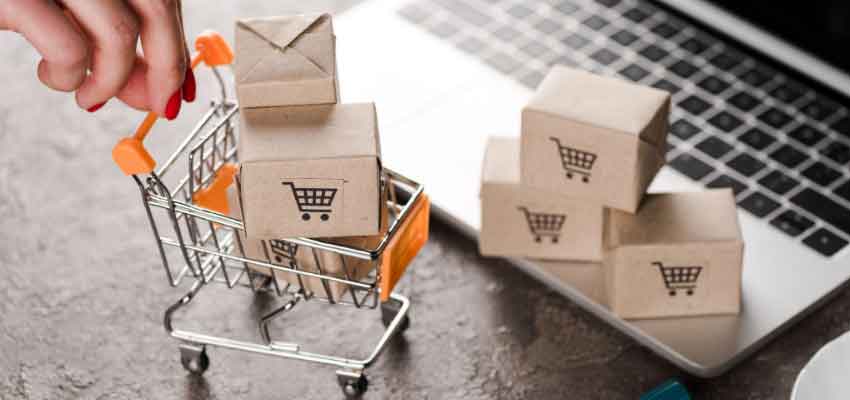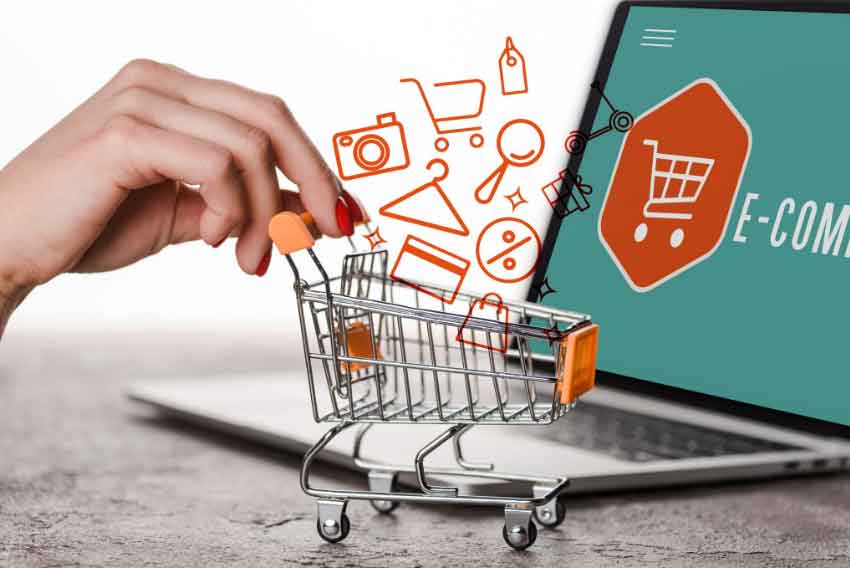Show:
9 Things To Think About Before Selling Online
There are lots of reasons why you might consider selling online. Firstly, consumers have become accustomed to shopping online, and many prefer this as a way of getting their goods and services. Not only this, but it is more convenient for you, comes with a lower start-up cost, is efficient, flexible and can help you to reach a much wider target audience.

However, as with anything, selling online does have some of its own unique challenges. Therefore, you need to give it some careful thought before choosing an e-commerce business method.
For anyone seriously considering setting up an online business, we would suggest that you take this decision as seriously as you would if you were about to open a brick-and-mortar shop. To help you do this, we’ve created this guide of nine things you need to think about before selling online.
1. What you’re going to sell
First and foremost, you need to decide what it is you’re going to be selling on your online store. This will depend on what type of business you want to run, whether you make your products yourself and whether you currently run a business that you’re planning to move online.
You need to have a firm idea of what you want to sell on your online store before you begin. There is always the possibility that this will change in the future, particularly if your niche is no longer very profitable, but in the first instance, you need to be ready with an idea.
2. Dropshipping Vs. traditional e-commerce
Next up, you need to decide whether you’re going to use dropshipping or a traditional e-commerce method. This will very much depend on what you’re selling. If you make your goods yourself or you’re offering a service, a traditional e-commerce store is going to be the best option.
However, if you don’t have the space to keep the goods yourself, you might be better suited to a dropshipping business model. This way, you can sell goods to customers without having to find storage space to keep them.
But before you begin designing your e-commerce website, you need to decide on a business model that’s going to be best for you.
3. Which platform you’re going to use
One of the biggest decisions you’re going to have to make is which platform you want to use for your website. There are loads of e-commerce tools out there that make creating an online shop quick and easy; the trick is choosing the right platform for you.
Alternatively, you could have someone build the website for you from scratch, though this often means you have to continue to employ their services as you cannot work on the site yourself. Popular platforms like Squarespace, WordPress and Shopify offer simple drag-and-drop functionality that makes creating an online store pretty straightforward, even for beginners.
If you’re running a dropshipping business, it’s best to choose a platform that can easily be integrated with dropshipping providers, such as AliExpress.
4. Shipping options
As well as getting your payment options right, you also need to make sure you offer the right shipping to your customers. Rising shipping costs can be tricky to navigate, and you don’t want to end up charging your customers a fortune.
Therefore it’s best to offer a variety of options available, including standard, next day and possibly free shipping on orders over a certain price. This will mean choosing the right shipping providers and couriers to ensure that your packages arrive on time and keep customers happy.
Again, having multiple shipping options can increase conversion rates and customer satisfaction.
You should also take some precautions when it comes to shipping to ensure that your packages arrive safely and on time. Establishing a good shipping insurance policy will ensure that in the event of damaged or lost packages, you are covered and able to cover any losses. Shipping insurance can also give customers peace of mind when making a purchase from your store.

5. Your prices
Once you’ve got your store up and running, you need to make sure that your products are fairly priced so as to attract customers whilst also making you the maximum profit. You might wish to offer online discounts if you also have a brick-and-mortar store, but whatever the case, you need to make sure you’re offering the right rates.
Do some research beforehand and find out what similar products are selling for. If you’re creating the product yourself, you need to take your time into consideration and ensure you’re making a fair hourly rate. Of course, your prices can always change, and you can always run seasonal sales and discounts, but it’s a good idea to keep your prices competitive in the early stages.
6. How you’ll accept payments
No e-commerce website would be complete without the ability to take payments. As such, you need to choose the payment gateway that’s going to be best for you and your customers. You might also wish to add several payment options to increase conversion rates.
What do we mean by this? Well, as well as accepting debit and credit card payments, you could also set up payment options like PayPal or Klarna. This can stop customers from abandoning their baskets and can increase sales.
7. Packaging your goods
Once you know what shipping options you’re going to be offering, you need to think about how these are going to be packaged. This might mean having branded packaging made or possibly choosing packaging that is entirely eco-friendly and sustainable.
If you’re setting up a dropshipping business, you won’t have much say in the packaging process as this is done by the supplier, so you need to be aware of this.

8. Your returns policy
You need to make sure you’ve got a good process in place for handling returned goods, as online shopping tends to lead to higher levels of returns.
Once you’ve decided how you are going to handle returns and who will be paying for the return shipping, this policy should be clearly outlined on your website.
9. How to market your business
Finally, you need to think about how you’re going to market your new online store and get your name out there. Social media is always a great place to start, using visuals and hashtags to reach your target audience. You also need to think about things like paid advertising, search engine optimisation and possibly even traditional marketing techniques such as leaflet drops and in-store promotions.
You should choose the marketing techniques that you’re most comfortable with and that you feel will be most effective. This might change over time, but either way, you need to make sure that you’re measuring the results and using only the most effective techniques.

 Return to Previous Page
Return to Previous Page








